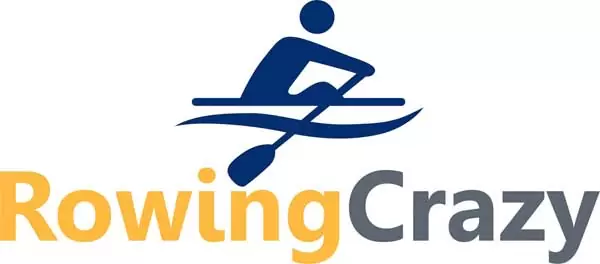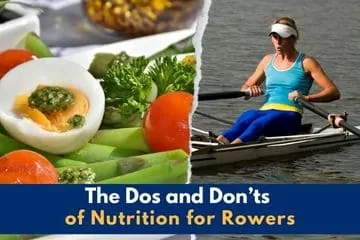
Hi friends! It’s your favorite blogger Petra, and today, I want to talk about nutrition, particularly rowing diet.
The word “diet” has some really negative connotations with it, doesn’t it? Diet immediately brings to mind starvation or deprivation.
I always remember that Garfield cartoon where Garfield the cat told his own “Diet is DIE with a T” LOL.
Let’s remember that the word diet doesn’t always mean eating less to lose weight. A good diet plan means that you are creating an eating plan as your training and competition demands.
Even if you aren’t interested in competition performance, you still want to look and feel your best, and a good diet (read meal plan) can do just that.
Whether you’ve decided to drop a few extra pounds or a great many pounds, move up to a higher fitness level, or you simply want to be sure that you are eating a well-balanced plan, this article is for you.
- Trending Article: Hydrow vs Concept 2 Rower
Nutrition Plan for Rowers
Whatever kind of rowing workout you engage in, your meals must be patterned in a way to:
- Fuel your workout – before training or racing, provide your body with the energy necessary to take you through the session.
- Maximize your recovery – following a workout, stock up on lost energy and promote the body’s general health.
What to Eat Before a Rowing Workout
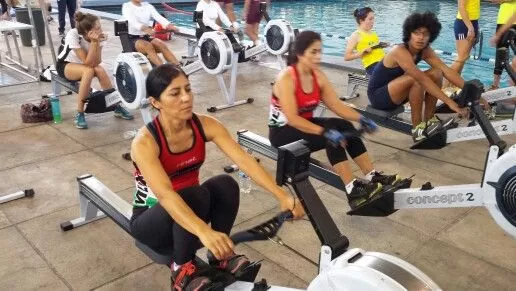
Before you even think about your workout, let’s talk about how you can fuel that workout.
It’s essential that the body has a good supply of glucose and water prior to a workout session as a way to maximize your rowing performance. The source needs to be a nutritious meal. This would be a good time to take a high-carb meal.
Consider eating a breakfast cereal with milk (low-fat), a fruit with a corresponding low-fat yogurt, cornbread or whole grain toast with jam.
Trending Article: Hydrow Vs NordicTrack Rowers
How Long Before Rowing Should You Eat?
It’s not the same for everyone, but between two and four hours before your training or competition is a good time to eat a meal. It should give you ample time to digest your food and feel comfortable but still leave you enough fuel to burn for the workout.
For greater performance, it is important that your body gets anywhere between 100 and 200 calories 30 to 45 minutes before your workout. Sports drinks, an energy breakfast bar, a bagel or a banana would be great pre-workout nourishment for rowers.
What to Eat After a Rowing Workout
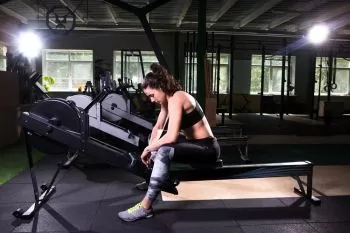
Hopefully, you managed to drink some water while you were exercising. If not, be sure to drink water or sports drinks afterward.
Your body needs to recover now, so consider eating a light carb within an hour of a rowing event. A well-balanced meal within two to four hours of your workout activity will help with replacing the calories burned rowing.
- Trending Article: Aviron Rower vs Hydrow
What’s a Good Snack to Eat Post Workout?
For the post-workout snack, consider taking your favorite sports drinks, a cereal bar, a sandwich or fruit. Your meal at this time should comprise between 15 and 20 grams of protein along with the light carb.
Low-fat yogurt, milk, cottage cheese, nuts, peanut butter, seeds, lean meats, eggs, chicken, legumes, and soy products are healthy protein-rich options of nutrition for rowers to choose from.
What Are Good Foods for Rowers?
Diet can make or break the success of your fitness or sporting plan, and like most rowers, you must have specific fitness and weight management goals in mind. For this reason and to maximize your athletic performance, you need proper nutrition to fuel your body correctly.
You probably already know that using a rowing machine (check out our list of best rowers here ) will burn major calories, meaning, your body will require a good supply of calories to replenish what you burn.
You don’t have to be a professional rower to follow a proper meal plan. Even if you row simply for fun and fitness, you need a balanced diet to succeed in your fitness journey.
While healthy carbs and proteins should be part of your rowing diet plan, don’t forget to keep your body well supplied with other essential nutrients such as vitamins and basic fats as well.
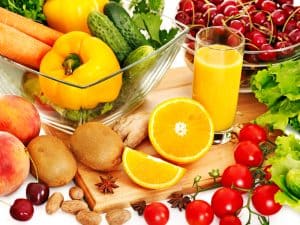
Other great sources of nutrition for rowers include:
- healthy drinks (think freshly squeezed fruit juice or vegetable juice, water, mineral water, etc.)
- fresh fruits and vegetables
- yogurt
- peanut or other nut butters
- crackers and whole grain breads
- fruit smoothies
- dried fruits
Take note that frozen fruits and veggies are nearly as good as fresh. So if you love strawberry/banana smoothies, using frozen strawberries when fresh are not available is just fine.
Don’t forget dried fruit such as apricots, dates, prunes, apples, raisins, figs, mangos, and pears. These are equally high in nutrient content and are great as quick snacks.
- Trending Article: Hydrow Rower vs Hydrow Wave
The Dos and Don’ts of a Rowing Diet
I believe in that old piece of advice that says, “Eating good 80 percent of the time will cancel out the other 20 percent of the time.”
It’s nearly impossible for someone in today’s world to avoid all of the bad or junk food. However, I’ve known plenty of very healthy people who had no problem gulping down a small bag of potato chips or a piece of birthday cake now and again without harm.
Make junk foods and fast food an exception to your diet and not the rule, and you will be OK.
However, there are a few important Dos and Don’ts that you should take note of, and here they are.
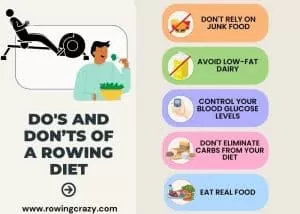
- Do not make junk foods your main source of food, period. I think that every fast food outlet offers something healthy, such as salads, so if a fast food outlet is your only option, look for the healthiest thing on the menu. Avoid sodas, French fries, fried zucchini, ice cream, and other goodies.
- Remember that fat is your friend, so avoid low-fat dairy items. They don’t taste that good anyway, and fat is not your enemy.
- Control your blood glucose levels. This is important advice for anyone working out and is not exclusively for diabetics. If you can maintain a steady blood sugar level during your training sessions, you will find that you have more energy all day.
- If you are trying to lower your body weight, you can limit the number of carbs you consume, but don’t eliminate carbs entirely.
- Eat REAL food. I can’t stress this enough. So many of us rely on highly processed foods (mac n cheese in the box, for example). For the ultimate in sports nutrition, eat as many fruits and vegetables as you can, along with nuts, cheese, milk, seeds, and lean meats.
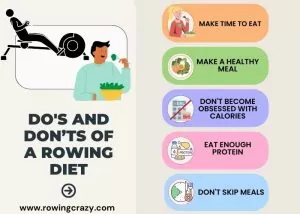
- Don’t let training sessions interfere with your nutrition. If you don’t “have time” to eat, then you need to cut back on those multiple training sessions. This is especially true if you are only eating fast food or junk food because you “don’t have time”
- Don’t sacrifice your nutrition for a quick fix. I’ve seen many people gobble down a candy bar because they are tired. You would do much better to skip a workout, go shopping, and make a healthy meal for yourself. In a real pinch, consider stocking up on liquid meal supplements aka protein shakes.
- Don’t become obsessed with calories. Yes, calories matter, but not all calories are the same. Picture a 100-calorie apple as compared to a 100-calorie candy bar and you’ll understand.
- Do eat enough protein but monitor your protein intake. You should consume no more than 1 gram of protein for every 2 pounds that you weigh. Most people consume far more protein than their bodies can use thinking that this will improve muscle mass, but that isn’t true. Your body can’t use more than that, so all you are really doing is hurting your kidneys because it’s their job to remove excess protein.
- Avoid dieting. Now in this instance, I AM talking about skipping meals or avoiding eating to lose weight. Anything with the word “diet” in it is not for you. You want a MEAL PLAN that will help you lose weight but doesn’t make any type of food off limits.
Now that I’ve brought up the subject, let’s talk about a meal plan that would be great for any type of training session.
A Rower’s Diet Meal Plan
Everyone’s tastes are different so no meal plan is going to work perfectly for everyone. What this will do is give you an idea about what you should eat to maintain your aerobic and anaerobic energy levels.
Creating a realistic meal plan for yourself will go a long way towards keeping you motivated to do those early morning training sessions.
Be sure that whatever personalized sports nutrition plan you follow, it has familiar foods you really enjoy. No one will stick to a plan that has foods they don’t enjoy.
A sample meal plan for rowers would be:
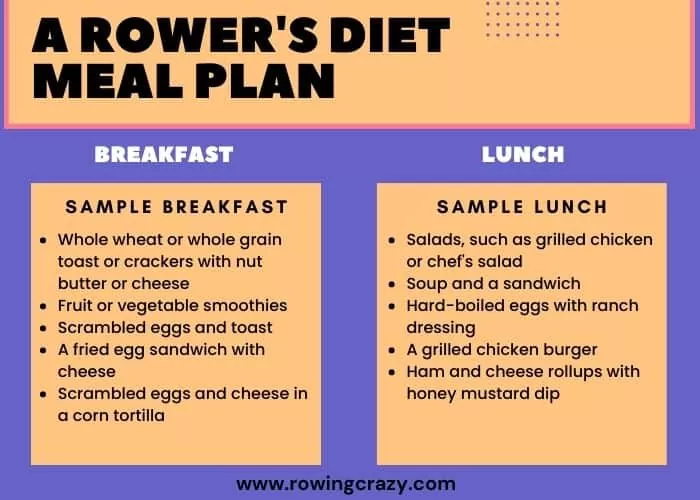
Sample Breakfast Meal Plan for Rowers
- Whole wheat or whole grain toast or crackers with nut butter or cheese
- Fruit or vegetable smoothies
- Scrambled eggs and toast
- A fried egg sandwich with cheese
- Scrambled eggs and cheese in a corn tortilla
Sample Lunch Meal Plan for Rowers
- Salads, such as grilled chicken or chef’s salad
- Soup and a sandwich
- Hard-boiled eggs with ranch dressing
- A grilled chicken burger
- Ham and cheese rollups with honey mustard dip
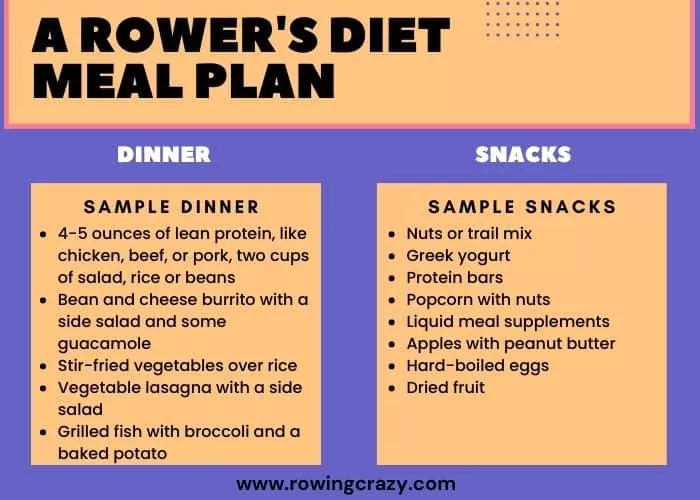
Sample Dinner Meal Plan for Rowers
- 4-5 ounces of lean protein, like chicken, beef, or pork, two cups of salad, rice or beans
- Bean and cheese burrito with a side salad and some guacamole
- Stir-fried vegetables over rice
- Vegetable lasagna with a side salad
- Grilled fish with broccoli and a baked potato
Snacks
- Nuts or trail mix
- Greek yogurt
- Protein bars
- Popcorn with nuts
- Liquid meal supplements
- Apples with peanut butter
- Hard-boiled eggs
- Dried fruit
You can still enjoy the foods you love when you consume them in the right quantity.
Water & Drinks
Don’t forget that you’ll still need your 8-10 glasses of water each day.
The strenuous nature of rowing also means that you lose a lot of water through sweat, especially in hot weather. Whether you are working out on an indoor rower or outside on the water, you’ll need to stay hydrated.
Sports drinks can count as water, but they often have too many calories and too much sodium to drink all day long. Limit sports drinks to one per day.
How Often Should Rowers Eat?
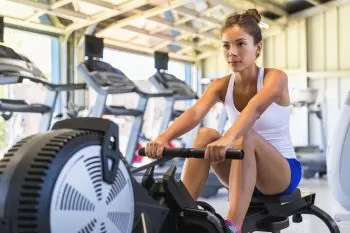
This would depend on how hard you work out or how often your training cycles are.
It also matters whether you are trying to maintain your current body weight or lose weight.
Generally speaking, you should try to eat 3-5 times per day. Small meals with snacks are much better than 2 or 3 big meals per day.
Don’t skip meals! Your body needs fuel both for working and for recovery.
Consider a meal plan that has you eat 3 small meals per day and at least 2 snacks per day.
Apply the 2-thirds rule. By the time your day is 2-thirds done, you should have eaten 2-thirds of your daily calories. Don’t save them all and chow down just before bedtime.
Remember that a little bit goes a long way. A small granola bar will keep you from being hungry for a few hours, while a chocolate bar will only give you energy for about 30-45 minutes.
If you feel hungry between meals or you’ve consumed all the calories that you had planned on but you’re still hungry, try eating high-volume foods that really satisfy, such as popcorn, celery with a bit of peanut butter, or cabbage soup.
My Best Snacking Tip for Rowers
Let me tell you about the best snack tip I’ve ever gotten. It seems like common sense, but it has worked for me so well over the years that I have to tell you about it.
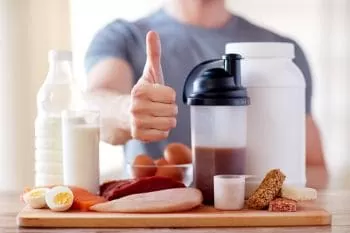
When your blood sugar is low, I can promise you that you are going to eat the first thing (or the easiest thing) that you can find.
So, make healthy snacks that are easy to find!
Every other day, I cut up veggies, fruit, and boil a dozen eggs, as well as make small baggies of snacks (such as nuts. I buy big containers and then put single servings into plastic bags) and put them in my “snack cupboard”.
I also have a drawer in the fridge that is strictly for snacks.
This way, when I want a snack, my healthy snacks are right in front of my face! I open the cupboard or fridge and there they are! Fruits are washed, veggies are cut up, and I can simply grab what I want.
The same is true with the snack cupboard. Open the cupboard and help yourself to anything that looks good to you at the moment.
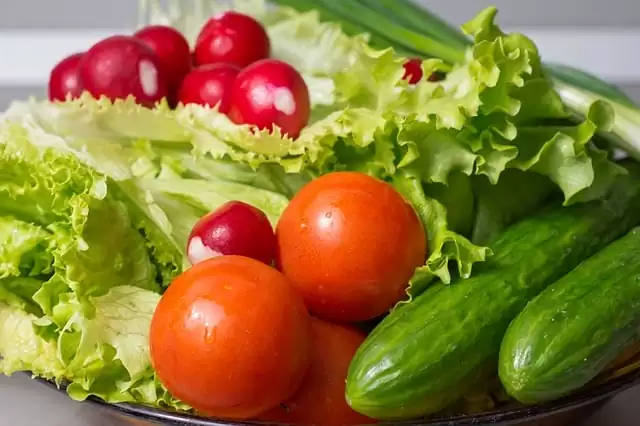
Best of all, when I have to leave the house, I almost always take a small cooler with me. I pack it with water, fruit, pretzels, nuts, etc.
This cooler saves me not only from paying high prices at convenience stores, but I don’t stop at Mickey D’s for a milkshake because I’m hungry!
It only takes me about 30 minutes or less, but the time and calories this tip has saved me are immeasurable.
The Bottom Line
Nutrition should be such a simple thing, but with the introduction of fast foods, junk foods, and super highly processed foods, eating has become so darn complicated!
Make things easy on yourself and don’t punish yourself if you gave in and ate a couple of Krispy Kreme donuts. Everyone slips up from time to time. Get right back on your meal plan and you’ll be fine.
Eat healthy as much as possible, monitor your weight, and you’ll be enjoying your regatta before you know it!
Stay healthy and eat well, friends! Have fun rowing!
Written by Petra Amara – RowingCrazy.com
CEO & Founder of RowingCrazy, National Rower, Coxswain Womens Eight Team, Rowing Coach & Writer
Petra is a Mother of two and owner of Rowingcrazy.com. Petra lives and breathes rowing, she also has a passion for writing which lead her to start RowingCrazy.com to share her rowing experience and expertise with others.



